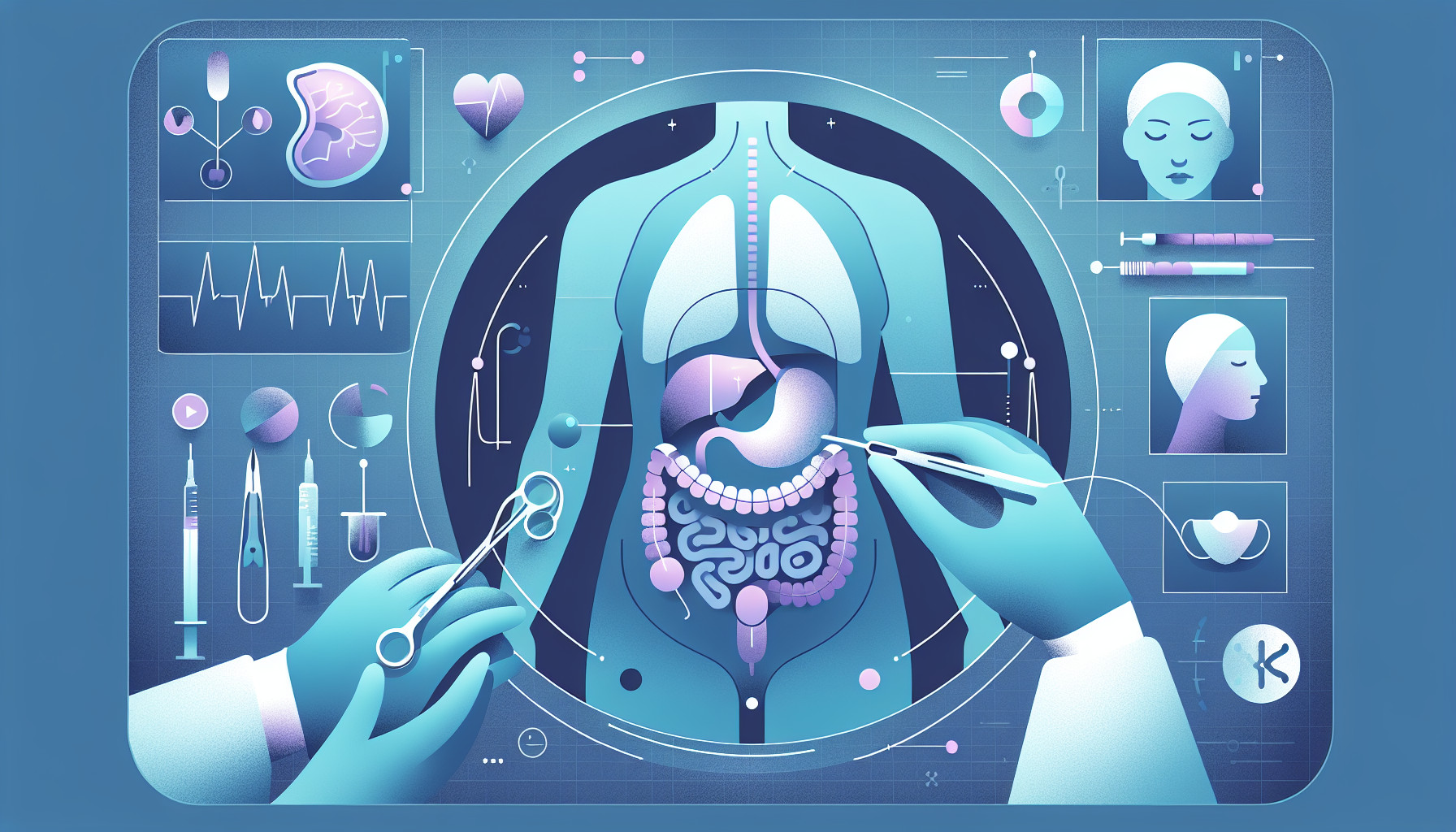Our Summary
This research paper looked at problems that can occur after a specific type of weight loss surgery, called a sleeve gastrectomy. In this procedure, a large part of the stomach is removed, leaving a smaller, tube-like “sleeve.”
The researchers were particularly interested in a complication called sleeve stenosis. This is when the remaining part of the stomach becomes too narrow, which can cause symptoms like difficulty swallowing or food getting stuck.
The researchers looked at the medical records and x-ray images of 43 people who had the surgery and were experiencing symptoms. They found that 60% of these people had sleeve stenosis. This was identified as a short, narrowed section in their stomach, usually at the top or bottom third of the stomach sleeve.
In addition, they found that the barium study, which involves swallowing a special liquid that shows up on x-rays, was a useful way to diagnose sleeve stenosis. Interestingly, only two-thirds of the cases of stenosis seen on the x-ray were also spotted when doctors looked directly into the stomach with a thin tube and camera (a procedure called an endoscopy).
Most of the patients with stenosis had symptoms related to problems with food passing through the stomach, such as difficulty swallowing. However, 30% of patients with stenosis didn’t have these symptoms.
When it came to treatment, most of the patients who had their stomach sleeve widened using an endoscopy saw an improvement or resolution of their symptoms.
In simpler terms, the study found that narrowing of the stomach sleeve can be a common problem after this type of weight loss surgery, but it can be successfully treated. It also found that using a barium study to highlight the stomach on an x-ray can be a helpful way to diagnose the problem.
FAQs
- What are the typical characteristics of sleeve stenosis after sleeve gastrectomy as observed in the study?
- How effective is endoscopic dilation in treating patients with sleeve stenosis after sleeve gastrectomy?
- How useful is the barium study in diagnosing sleeve stenosis in patients with obstructive or non-obstructive symptoms after sleeve gastrectomy?
Doctor’s Tip
A helpful tip a doctor might tell a patient about gastric sleeve surgery is to be aware of the possibility of sleeve stenosis, which is a narrowing of the sleeve that can cause obstructive symptoms. Patients should be vigilant for symptoms such as difficulty swallowing, regurgitation, or food getting stuck, and should promptly report any concerns to their healthcare provider. Endoscopic dilation is a common treatment for sleeve stenosis and has been shown to be effective in improving symptoms in the majority of cases. Regular follow-up appointments with a healthcare provider are important to monitor for any potential complications after gastric sleeve surgery.
Suitable For
Patients who are typically recommended for gastric sleeve surgery are those who are severely obese with a BMI of 40 or higher, or a BMI of 35 or higher with obesity-related comorbidities such as type 2 diabetes, high blood pressure, or sleep apnea. These patients have often tried and failed to lose weight through diet and exercise alone and are looking for a more permanent solution to their weight loss struggles. Additionally, patients who are motivated and committed to making lifestyle changes post-surgery are also good candidates for gastric sleeve surgery.
Timeline
Before undergoing gastric sleeve surgery:
- Consultation with a bariatric surgeon to discuss options for weight loss surgery.
- Pre-operative evaluations such as blood tests, imaging studies, and consultations with other healthcare providers.
- Pre-operative diet and lifestyle changes to prepare for surgery.
After gastric sleeve surgery:
- Hospitalization for a few days following the surgery.
- Gradual transition from clear liquids to pureed foods and eventually solid foods.
- Follow-up appointments with the bariatric team for monitoring weight loss progress, nutritional status, and potential complications.
- Lifestyle changes including regular exercise and healthy eating habits to support weight loss and long-term success.
- Possible complications such as sleeve stenosis, which may require additional diagnostic tests and treatments such as endoscopic dilation.
What to Ask Your Doctor
- What are the potential complications or side effects of gastric sleeve surgery, including the risk of developing sleeve stenosis?
- How common is sleeve stenosis after gastric sleeve surgery, and what are the typical symptoms associated with it?
- How is sleeve stenosis diagnosed, and what tests or imaging studies may be used to identify it?
- What treatment options are available for sleeve stenosis, and what are the potential outcomes of these treatments?
- Are there any lifestyle changes or dietary modifications that can help prevent or manage sleeve stenosis after gastric sleeve surgery?
- How often should follow-up appointments be scheduled after gastric sleeve surgery to monitor for potential complications like sleeve stenosis?
Reference
Authors: Levy JL, Levine MS, Rubesin SE, Williams NN, Dumon KR. Journal: Br J Radiol. 2018 Sep;91(1089):20170702. doi: 10.1259/bjr.20170702. Epub 2018 Feb 6. PMID: 29227144
